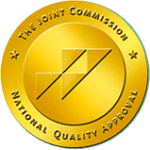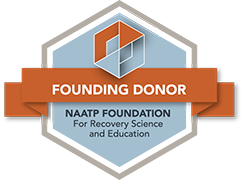Recovery Life: The Importance of Establishing Structure in Your Daily Routine
When we’re actively involved in addiction, our daily schedule involves the intense desire to abuse substances. As Harvard Health indicates, craving, loss of control, and continued involvement in substances – despite their consequences – essentially hardwires our brain to want nothing else. In 2017, CNBC covered a study that surveyed 1,057 individuals who identified as having an addiction. These participants were located around the United States and, while many of these people held jobs and carried out seemingly “normal” lives, there were a few key factors that made up the structure of their day:
- Individuals were spending about $16.94 to $35.06 per day on substances
- Unemployment rates were much higher than for those not experiencing addiction
- A surprisingly high number of people reported using substances on the job – which can certainly have an effect on their workplace performance and other factors involved with daily life
Even those who are able to function while maintaining addiction will find that substances take over some areas of their lives that they previously made time for – such as with relationships, hobbies and more. With that being said, the only way to find true healing and transformation is to change the routine; as Very Well Mind states, “…If you quit your drug of choice but continue with your same routine…it will be much easier to slip back into your old behaviors and habits.”
Structure Changes in Recovery
Many entering recovery find that structure becomes a crucial element; from the time they wake up to the time they go to bed, recovery requires that clients develop a system for their day-to-day actions – but it’s all for a reason. Just as addiction can cause specific thought and behavioral patterns to think about using or obtaining substances, a person must essentially “re-train” their mind to think about recovery and self-care. Not doing so could increase a person’s risk for relapse – and there are several areas of a person’s life that need retraining besides simply their drug use.
Environment – your home environment may be triggering, especially if you used substances there. Your neighborhood can also make it difficult to work through, which is why residential treatment programs are often a great option for healing.
Social Support – a 2015 study published in the British Journal of Social Psychology found that as those in recovery experience a change in identity (from a “user” to a “person in recovery”), the distancing of friends whom one used to use substances with is necessary for transformation.
Hobbies – it’s quite normal for those with active addiction to miss out on previously held hobbies, as their primary concern is using substances; treatment aims to boost structure in a person’s daily life through the implementation of new hobbies pertaining to nature, art, music, helping others and more.
Time – from morning to night, time is essential because it gives those in recovery a set plan for the day – with little room for their mind to wander. Those in recovery often find it comforting that throughout treatment, they do not need to worry about navigating day-to-day life – they can focus strictly on their health and well-being.
Mental Health – researchers published a study in 2015 that emphasized the improvement of mental health conditions in those with recovery when abstinence and structure were implemented into their daily lives. The expectations laid out through treatment often give people recovering a chance to focus on their mental, physical and spiritual health over anything else.
Education – individual and group therapy sessions educate people on both addiction and recovery, which only further reinforces a life of sobriety.
12-Step Programs Add Structure to Recovery
12-Step programs, such as Alcoholics Anonymous (AA) and Narcotics Anonymous (NA), have become a staple of addiction recovery as people from all over the world have attested to the strength, purpose and support these programs have fostered over time. A few years ago, a person shared their A.A. recovery story with RecoveryandMe.org. Here is an excerpt from their story: “I have been sober now for 2 ½ years and I am living a life beyond my wildest dreams. I have “real” friends and a new family in A.A. I began college on my 46th birthday. I have a beautiful car and a steady job. Most importantly, I have a new strong relationship with my children who are proud of me and love me unconditionally. Thank you A.A.”
12-Step programs provide people with an opportunity to build strong connections with peers in recovery, while forming a life in recovery. Daily and weekly meetings educate and inspire people to reach their recovery goals by strengthening their connection with God or another Higher Power, which has undoubtedly transformed many people’s lives.
In 2014, researchers published a study in the Journal of Substance Abuse Treatment that involved following 1,945 people through their recovery journey; 12-Step attendance was recorded as well as abstinence rates across 1,5,7 and 9-year time spans. Overall, they found that 12-Step attendance led to abstinence – and it’s safe to say that the structure provided through this program only served to reinforce a life of sobriety.
This is the year to change your life from suffering due to the disease of addiction to thriving in the sunlight of the spirit of sobriety. As the world’s first 12-Step treatment center, established in 1939, High Watch Recovery is dedicated to educating patients on 12-Step principles, actions, philosophies, and lifestyles, preparing them to live a happy and healthy sober life after graduating. For information on our continuum of clinical care and our compassionate approach to treatment, call us today: 860.927.3772.








